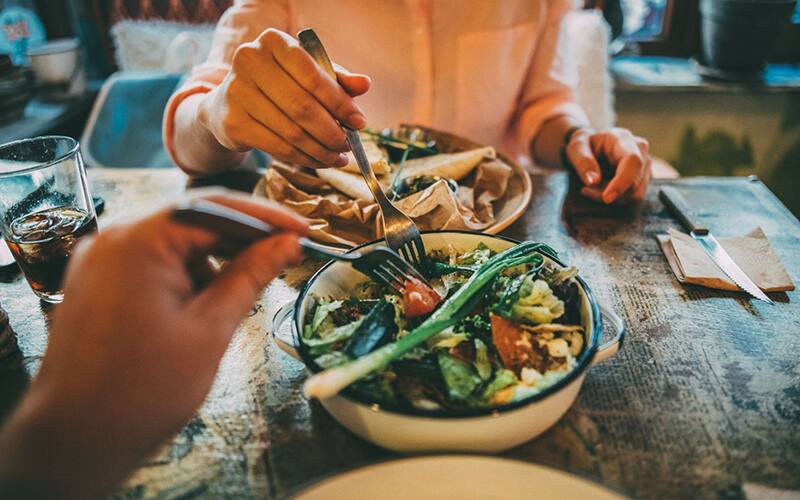
Young athletes don’t always understand nutrition basics, and the American food landscape has been set up for easy overeating – especially when it comes to less healthy options. As a parent, this environment makes it tricky to teach portion and serving sizes to children. Help educate your child about nutritional serving sizes with these five facts in mind.
We Live in a World of Portion Distortion
The Academy of Nutrition and Dietetics coined the term “portion distortion” to explain how portion sizes have expanded in the last few decades, and what once seemed like a huge serving of cake is our new normal. In fact, a research paper published in the BMJ showed that in 1950, a normal serving of soda was seven ounces – and today, it’s ballooned to a whopping 42 ounces. The paper speculated that returning to the smaller sizes could actually help prevent issues like childhood obesity.
Kids Don’t Always Understand Fullness Cues
Studies have shown that children don’t have an ‘off’ switch that lets them know when they feel full, and if given the chance, will tend to overeat. This is particularly true of calorie-dense ‘popular’ foods like macaroni and cheese. Cornell University researchers, including study author David Levitsky, have found that the greatest determinate for how much a child will eat is simply how much is piled on his or her plate. As a parent, you have the responsibility to choose your athlete’s serving size, and what you give them will dictate how they view serving sizes.
Teach a Few Portion Control Options
The easiest way to teach portion sizes is by using your child’s hand as a measuring stick, since portion size should grow with them.
A fist is a serving of vegetables, while a cupped hand is a serving of carbohydrates. For proteins like chicken or fish, a serving is palm-sized, and a serving of fat, like salad dressing, is a thumb according to Precision Nutrition.
You can also use the Academy of Nutrition and Dietetics’ sport-themed portion sizes if that helps your child visualize better: A serving of cereal should be baseball-sized for a child, while a serving of raisins should be golf ball size.
Pay Attention to Your Own Habits
In 2016, a study from the University of Florida revealed that the hungrier a parent is at mealtime, the more food they tend to pile on their child’s plate. Another study showed that how much you’re eating will influence how much your child will eat. If you’re feeling ravenous before dinner, it may be time to look at your own eating habits. That may mean eating a bigger lunch, so dinner isn’t so heavy, or at least making sure that you don’t absentmindedly fill your child’s plate just because you’re feeling hungry.
Kids Will Take More Than They Need
Researchers have shown that when a child is presented with a large portion of food, he will eat a greater amount of it. Use this research to your advantage when it comes to vegetables: Put a big bowl of salad on the table before the rest of the meal to ensure that the biggest portion your child serves is packed with nutrient-dense veggies.
It’s important to understand that the serving size on labels is not necessarily the correct measurement for your child. Rather, it’s a recommendation. Be especially aware of this for processed foods that aren’t child-specific, like chips or cookies. You may need to cut the serving size in half to be more appropriate for your young athlete. Try to pre-portion the servings into smaller bags for easy on-the-go grabbing.

